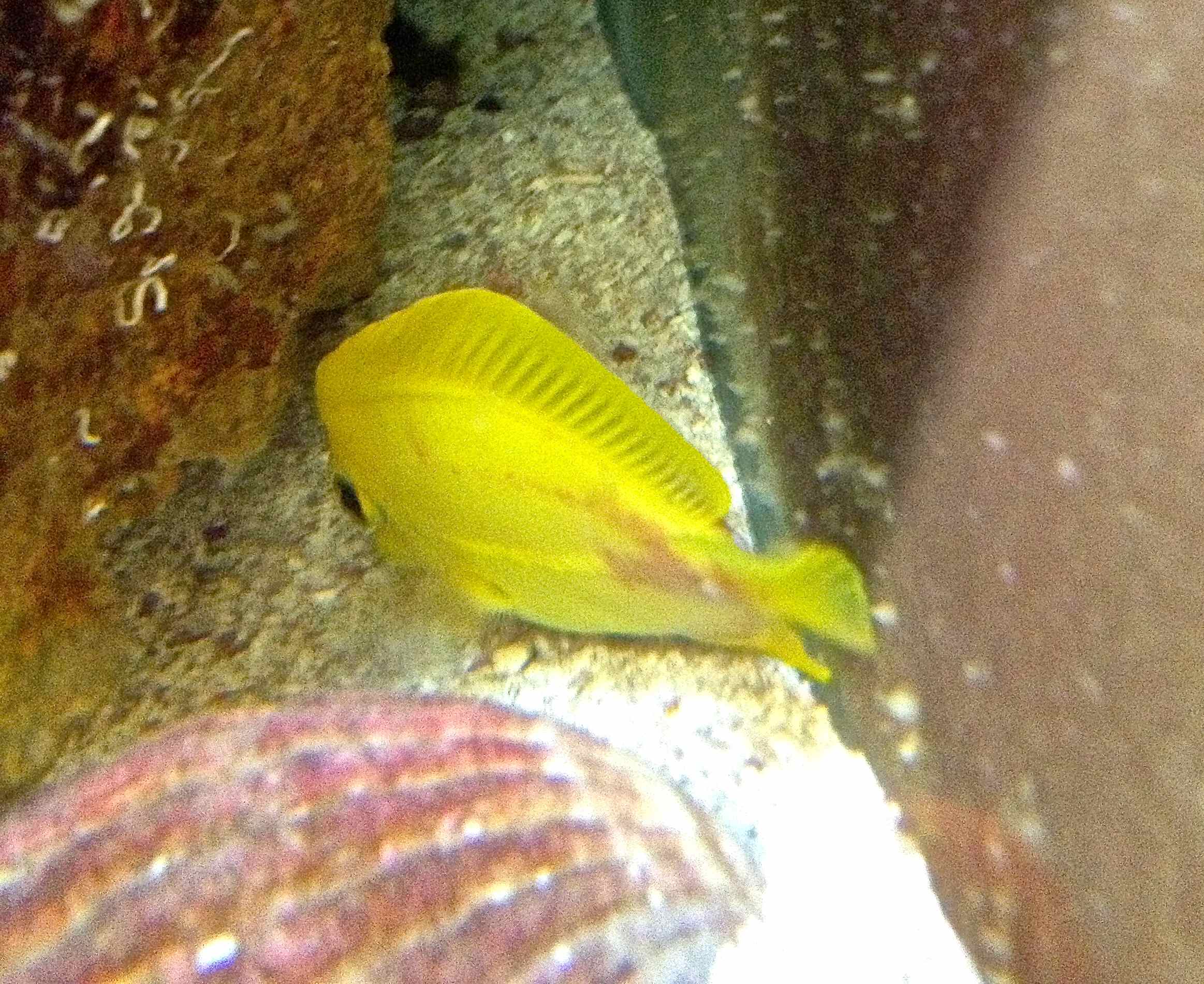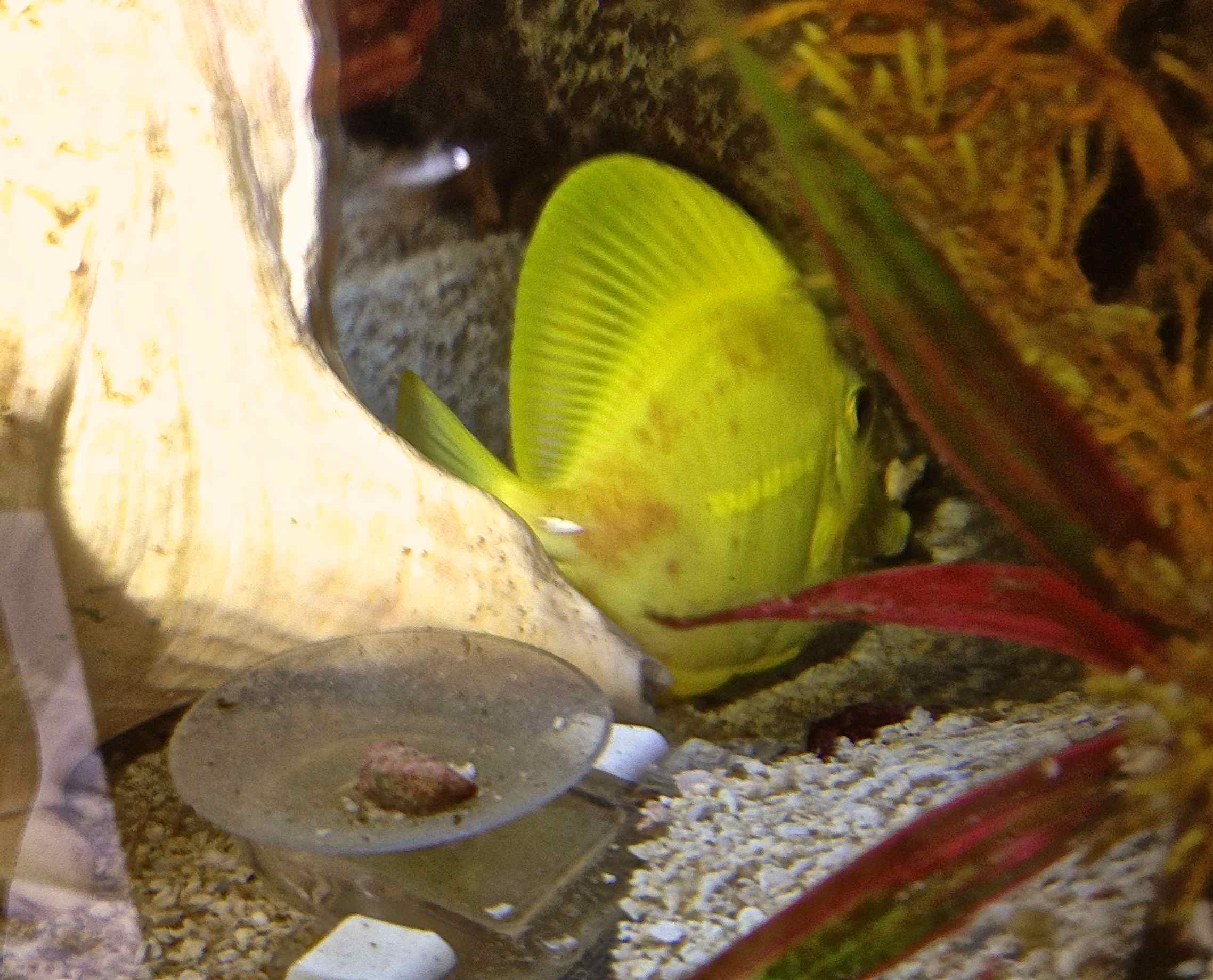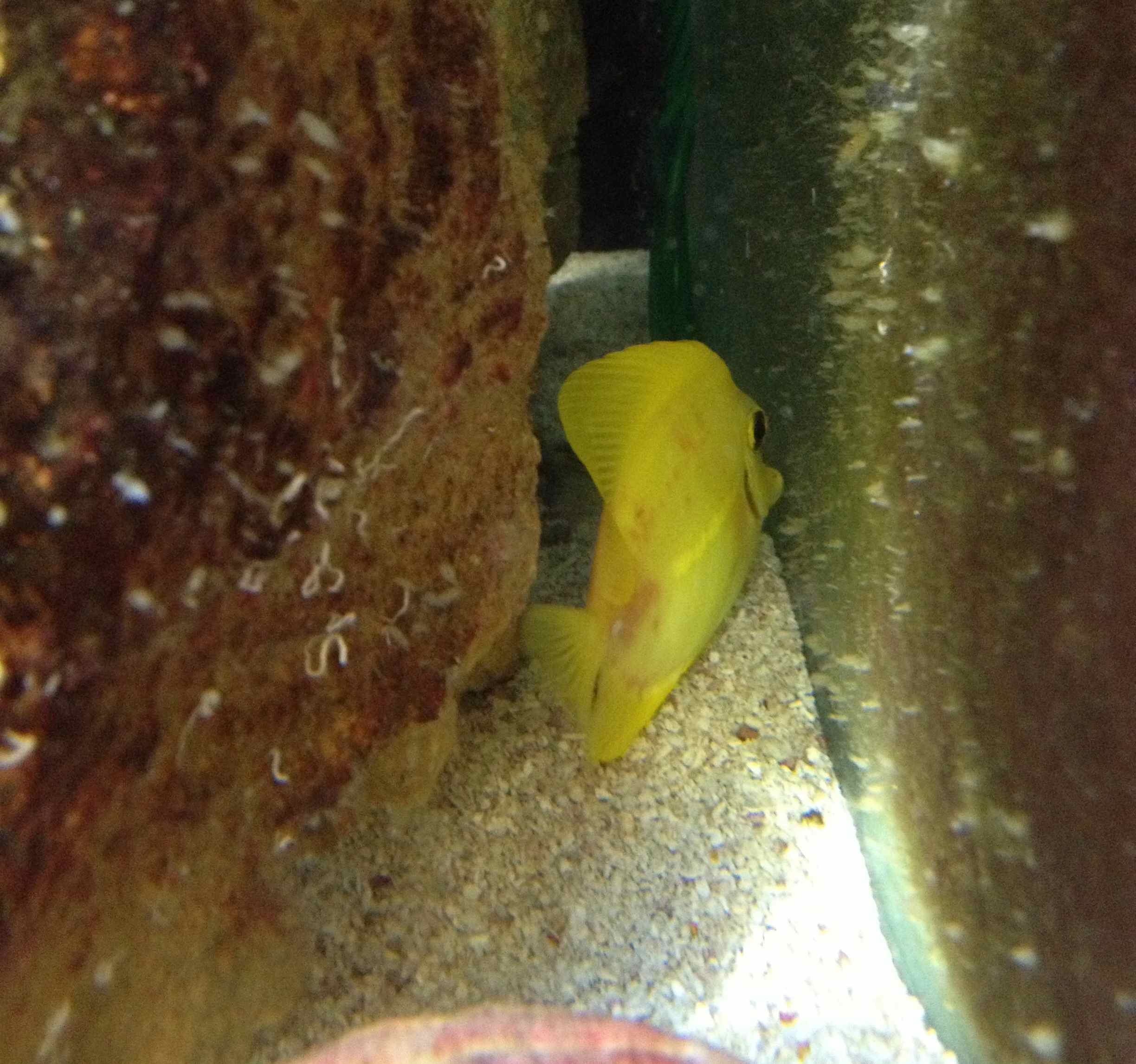brian michaels
New Member
I have read a bunch of threads about this type of red spotting on Yellow Tangs but haven't gotten any true idea what it is and how to treat it. I have a 90 gallon fish only tank with this Yellow Tang, a Niger Trigger, 2 Clown fish, a small Damsel fish and one Chocolate Chip starfish. It is a well established tank (6 years) with regular water changes and chems are in the very good range. Nothing new has been introduced in the tank for years but the Tang started showing these red blotches about 5 days ago. He is very active and feeds well. I do not have a quarantine tank. Good or bad, I have never needed one. Is this something that I can do to treat the Tang without removing it from the community tank? He is an elusive little critter but these pics should show the spots well enough.






